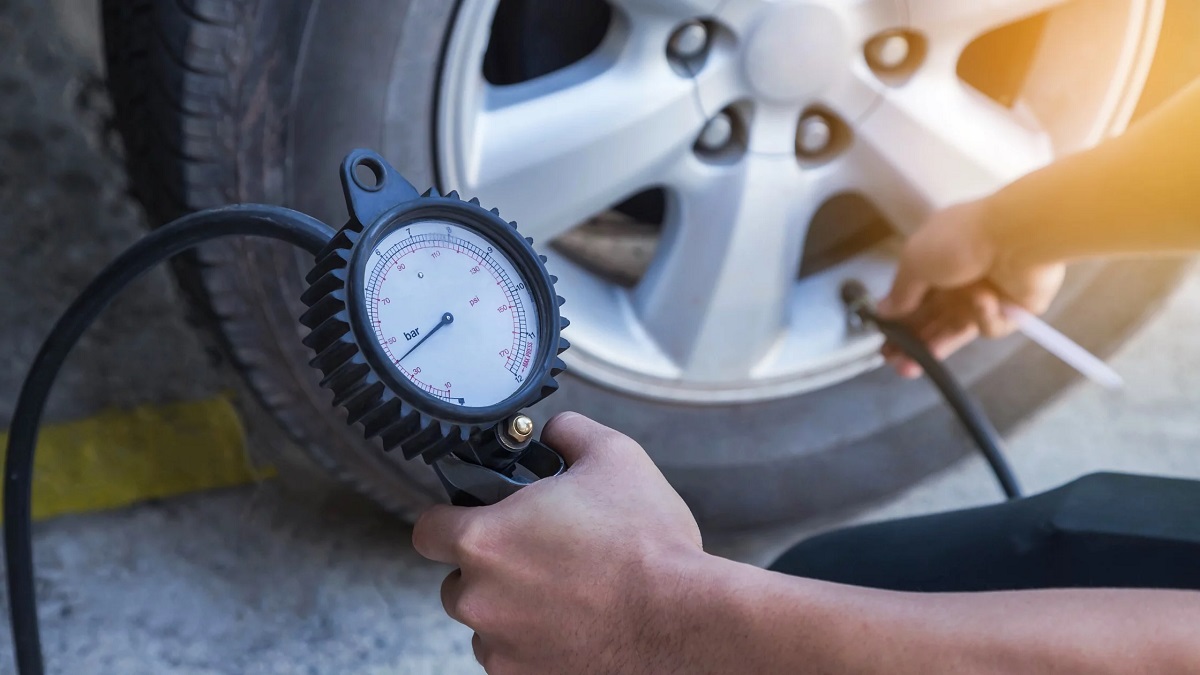Living in a world that’s always on the move, it’s essential to ensure your vehicle is in optimal condition for safe and efficient travel. One often overlooked aspect of vehicle maintenance is tire pressure.
Maintaining the correct tire pressure is crucial for safe driving and fuel efficiency. Under-inflated or over-inflated tires can lead to poor handling, increased wear and tear and even accidents.
In this guide, we’ll walk you through how to use a tire pressure gauge effectively, ensuring your tires are always in top condition for a smooth and safe ride.
Key Takeaways
Proper tire pressure is essential for safe driving and better vehicle handling. Regular checks help prevent accidents.
Stick, dial, and digital gauges are the main types. Digital gauges are the easiest to read and most accurate.
Check tire pressure when tires are cold for the most accurate readings, such as in the morning or after the car has been parked for a few hours.
Use an air compressor to add air if needed or press the valve stem core to release air and decrease pressure.
Check tire pressure monthly and before long trips, including the spare tire, to ensure all tires are properly inflated.
Step-by-Step Guide to Check Tire Pressure with a Tire Pressure Gauge
Keep your ride safe and smooth—follow our step-by-step guide to check tire pressure like a pro.
Step 1: Find the Recommended Tire Pressure

Credit: instagram.com/@barlow_adventures
Before you check your tire pressure, it’s crucial to know the recommended pressure for your vehicle’s tires. This information is vital for maintaining optimal driving conditions and ensuring safety.
You can usually find the recommended tire pressure in three main places: the vehicle’s owner’s manual, which contains detailed information about all aspects of the car; a sticker inside the driver’s door, typically located on the door frame or the edge of the door, where you can see it when the door is open; or inside the glove compartment door, where manufacturers sometimes place important information.
Following the recommended tire pressure helps improve fuel efficiency, tire longevity, and overall vehicle performance.
Step 2: Get the Right Tire Pressure Gauge

Choosing the best tire pressure gauge is essential for obtaining accurate readings. There are various types of gauges available, including stick, dial, and digital gauges, each with its own advantages.
Stick gauges are compact and simple to use, dial gauges are generally more precise with an easy-to-read display, and digital gauges provide quick, accurate readings with minimal effort. When selecting a gauge, consider your budget and how often you’ll use it. Ensure that the gauge you choose is from a reputable brand known for accuracy.
A reliable gauge will help you maintain proper tire pressure, which is crucial for safety and performance.
Step 3: Check Tire Pressure When Tires are Cold
For the most accurate tire pressure reading, it’s important to check the pressure when the tires are cold. Driving heats up the tires, causing the air inside to expand and potentially giving a false reading. To ensure the tires are cold, check the pressure first thing in the morning or wait at least three hours after driving.
Cold tires provide a true measure of the air pressure, helping you make the right adjustments. Accurate tire pressure readings are critical for safety, fuel efficiency, and preventing premature tire wear. Consistently checking tire pressure when tires are cold ensures you’re getting the most precise measurement.
Step 4: Remove the Valve Cap

Once you’re ready to check the tire pressure, locate the valve stem on the tire, which is usually a small, cylindrical protrusion. Carefully remove the valve cap by unscrewing it. Place the cap somewhere secure, like in your pocket or on a flat surface, so you don’t lose it. The valve cap protects the valve stem from dirt, dust and moisture, which can affect tire performance and the accuracy of pressure readings.
Removing the valve cap is a simple yet crucial step in the process, ensuring you have direct access to the valve stem for an accurate measurement and any necessary adjustments.
Step 5: Press the Gauge onto the Valve Stem
To measure the tire pressure, firmly press the tire pressure gauge onto the valve stem. You might hear a brief hiss of air escaping, which is normal and indicates that the gauge is correctly positioned. Ensure there’s no continuous hissing sound after the initial release, as this would mean the gauge isn’t sealed properly, leading to an inaccurate reading. Holding the gauge steady and straight helps in getting a precise measurement.
This step is crucial because a good seal between the gauge and the valve stem ensures the accuracy of the pressure reading, which is essential for proper tire maintenance.
Step 6: Read the Pressure
After firmly pressing the gauge onto the valve stem, it’s time to read the pressure. The type of gauge you’re using will determine how you read the pressure. If you have a stick gauge, a small stick will extend out from the body, indicating the pressure. For a dial gauge, the needle will point to the current pressure on a circular dial. With a digital gauge, the pressure will appear on a digital screen.
Ensure you’re reading the gauge correctly to determine the tire’s pressure accurately. Accurate reading is essential for deciding whether to add or release air to meet the recommended pressure.
Step 7: Compare with Recommended Pressure
Once you have the pressure reading from the gauge, compare it with the recommended tire pressure for your vehicle. This information, as mentioned earlier, can be found in the vehicle’s owner’s manual, on a sticker inside the driver’s door, or on the glove compartment door. If the measured pressure is lower than recommended, you’ll need to add air. If it’s higher, you’ll need to release some air.
Maintaining the recommended tire pressure is crucial for safety, fuel efficiency, and ensuring even tire wear. This step helps you understand whether your tires are properly inflated or if adjustments are needed.
Step 8: Adjust the Tire Pressure
To adjust the tire pressure, you’ll need to either add or release air. If the pressure is too low, use an air compressor, which you can find at most gas stations. Attach the air hose to the valve stem and add air in short bursts, checking the pressure frequently to avoid overinflation. If the pressure is too high, press down on the valve stem core with a small tool, such as the back of a stick gauge, to release air gradually.
Keep checking the pressure until it matches the recommended level. Properly adjusted tire pressure ensures safe driving and optimal vehicle performance.
READ MORE: 9 Critical Road Safety Tips for New Drivers
Step 9: Recheck the Pressure
After adjusting the tire pressure, it’s important to recheck the pressure to ensure it’s at the correct level. Use the tire pressure gauge to take another reading, just as you did initially. This step confirms that the adjustments you made have brought the tire pressure to the recommended level. If the pressure is still not correct, repeat the adjustment process and check again.
Ensuring the tire pressure is accurate after adjustments helps maintain safety, improve fuel efficiency, and extend the life of your tires. Regular rechecking is key to keeping your tires in optimal condition.
Step 10: Replace the Valve Cap
Once you have confirmed that the tire pressure is correct, replace the valve cap by screwing it back onto the valve stem. The valve cap is essential for keeping out dirt, dust, and moisture, which can affect the valve and potentially lead to air leaks. Ensuring the cap is securely in place helps maintain the tire’s air pressure over time.
This final step completes the tire pressure checking process, ensuring your tires are properly maintained. Regularly checking and adjusting tire pressure, along with replacing the valve cap, contributes to vehicle safety, tire longevity and better fuel economy.
Additional Tips
- Check All Tires: Don’t forget to check all four tires, including the spare.
- Regular Checks: Make it a habit to check your tire pressure at least once a month and before long trips.
- Watch for Seasonal Changes: Tire pressure can drop in cold weather, so be especially vigilant during winter months.
The Bottom Line
Using a tire pressure gauge is a simple but vital task for vehicle maintenance. By following these steps, you can ensure your tires are always at their optimal pressure, promoting safety, efficiency, and longevity.
Keep a tire pressure gauge in your vehicle at all times and make regular checks a part of your car care routine.


